-
EXECUTIVE SUMMARY
-
MARKET SYNOPSIS 12
-
KEY CONTRIBUTING
-
FACTORS 13
-
MARKET INTRODUCTION
-
DEFINITION 14
-
SCOPE OF THE
-
STUDY 14
-
RESEARCH OBJECTIVE 14
-
MARKET STRUCTURE 15
-
ASSUMPTIONS
-
& LIMITATIONS 15
-
RESEARCH METHODOLOGY
-
DATA MINING 16
-
3.2
-
SECONDARY RESEARCH 17
-
PRIMARY RESEARCH 18
-
BREAKDOWN OF PRIMARY
-
RESPONDENTS 19
-
FORECASTING TECHNIQUES 19
-
RESEARCH METHODOLOGY
- BOTTOM-UP APPROACH 21
- TOP-DOWN
-
FOR MARKET SIZE ESTIMATION 20
-
APPROACH 21
-
DATA TRIANGULATION 22
-
VALIDATION 22
-
MARKET
-
DYNAMICS
-
OVERVIEW 23
-
DRIVERS 24
- GROWING PREVALENCE
- INCREASING GERIATRIC POPULATION
- ADVANCEMENTS IN TECHNOLOGY 24
-
OF CARDIOVASCULAR AND NEUROLOGICAL DISEASES 24
-
24
-
RESTRAINTS 25
- STRINGENT
- LACK OF AWARENESS FOR THE USE OF ADVANCED TECHNOLOGIES
-
REGULATORY POLICIES 25
-
25
-
OPPORTUNITY 26
- ENTERING DEVELOPING ECONOMIES 26
-
MARKET
-
FACTOR ANALYSIS
-
PORTER’S FIVE FORCES MODEL 27
- BARGAINING
- BARGAINING POWER OF BUYERS 28
- THREAT
- THREAT OF SUBSTITUTES 28
- INTENSITY OF RIVALRY
-
POWER OF SUPPLIERS 28
-
OF NEW ENTRANTS 28
-
28
-
VALUE CHAIN ANALYSIS 29
- R&D AND DESIGNING 30
- DISTRIBUTION & SALES 30
- POST-SALES MONITORING
-
5.2.2
-
MANUFACTURING 30
-
30
-
PERFUSION RADIOLOGY MARKET, BY APPLICATION
-
OVERVIEW 31
-
6.2
-
CARDIOVASCULAR IMAGING 32
-
VENTILATION IMAGING 33
-
BRAIN IMAGING
-
34
-
OTHERS 35
-
PERFUSION RADIOLOGY MARKET, BY END USER
-
OVERVIEW
-
36
-
HOSPITALS 37
-
DIAGNOSTIC CENTERS 38
-
OTHERS 39
-
8
-
GLOBAL PERFUSION RADIOLOGY MARKET, BY REGION
-
OVERVIEW 40
-
AMERICAS
-
40
-
PERFUSION RADIOLOGY MARKET, BY APPLICATION
-
PERFUSION RADIOLOGY MARKET,
-
BY END USER
-
NORTH AMERICA 42
-
PERFUSION RADIOLOGY MARKET, BY APPLICATION
-
PERFUSION RADIOLOGY MARKET, BY END USER
-
PERFUSION RADIOLOGY
-
US 44
-
MARKET, BY APPLICATION
-
PERFUSION RADIOLOGY MARKET, BY END USER
-
8.2.1.2
-
CANADA 45
-
PERFUSION RADIOLOGY MARKET, BY APPLICATION
-
PERFUSION RADIOLOGY
-
MARKET, BY END USER
-
PERFUSION RADIOLOGY MARKET,
-
BY APPLICATION
-
LATIN AMERICA 46
-
PERFUSION RADIOLOGY MARKET, BY END USER
-
EUROPE 47
-
PERFUSION RADIOLOGY MARKET, BY APPLICATION
-
PERFUSION RADIOLOGY MARKET, BY
-
END USER
-
WESTERN EUROPE 49
-
PERFUSION RADIOLOGY MARKET, BY APPLICATION
-
PERFUSION RADIOLOGY MARKET, BY END USER
-
PERFUSION
-
GERMANY 51
-
RADIOLOGY MARKET, BY APPLICATION
-
PERFUSION RADIOLOGY MARKET, BY END USER
-
FRANCE 52
-
PERFUSION RADIOLOGY MARKET, BY APPLICATION
-
PERFUSION
-
RADIOLOGY MARKET, BY END USER
-
PERFUSION RADIOLOGY MARKET,
-
BY APPLICATION
-
UK 53
-
PERFUSION RADIOLOGY MARKET, BY END USER
-
ITALY 54
-
PERFUSION RADIOLOGY MARKET, BY APPLICATION
-
PERFUSION RADIOLOGY MARKET, BY
-
END USER
-
SPAIN 55
-
PERFUSION RADIOLOGY MARKET, BY APPLICATION
-
PERFUSION RADIOLOGY MARKET, BY END USER
-
REST OF WESTERN EUROPE 56
-
PERFUSION RADIOLOGY MARKET, BY APPLICATION
-
PERFUSION RADIOLOGY MARKET, BY
-
END USER
-
EASTERN EUROPE 57
-
PERFUSION RADIOLOGY MARKET, BY APPLICATION
-
PERFUSION RADIOLOGY MARKET, BY END USER
-
ASIA-PACIFIC 58
-
PERFUSION
-
RADIOLOGY MARKET, BY APPLICATION
-
PERFUSION RADIOLOGY MARKET, BY END USER
-
JAPAN 60
-
PERFUSION RADIOLOGY MARKET, BY APPLICATION
-
PERFUSION
-
RADIOLOGY MARKET, BY END USER
-
PERFUSION RADIOLOGY MARKET,
-
BY APPLICATION
-
CHINA 61
-
PERFUSION RADIOLOGY MARKET, BY END USER
-
INDIA 62
-
PERFUSION RADIOLOGY MARKET, BY APPLICATION
-
PERFUSION RADIOLOGY MARKET, BY
-
END USER
-
SOUTH KOREA 63
-
PERFUSION RADIOLOGY MARKET, BY APPLICATION
-
PERFUSION RADIOLOGY MARKET, BY END USER
-
PERFUSION
-
AUSTRALIA 64
-
RADIOLOGY MARKET, BY APPLICATION
-
PERFUSION RADIOLOGY MARKET, BY END USER
-
REST OF ASIA-PACIFIC 65
-
PERFUSION RADIOLOGY MARKET, BY APPLICATION
-
PERFUSION RADIOLOGY MARKET, BY END USER
-
MIDDLE EAST & AFRICA 67
-
PERFUSION RADIOLOGY MARKET, BY APPLICATION
-
PERFUSION RADIOLOGY MARKET, BY
-
END USER
-
MIDDLE EAST 69
-
PERFUSION RADIOLOGY MARKET, BY APPLICATION
-
PERFUSION RADIOLOGY MARKET, BY END USER
-
PERFUSION RADIOLOGY
-
AFRICA 70
-
MARKET, BY APPLICATION
-
PERFUSION RADIOLOGY MARKET, BY END USER
-
COMPETITIVE
-
LANDSCAPE
-
OVERVIEW 71
-
COMPETITIVE BENCHMARKING 72
-
LEADING
-
PLAYERS IN TERMS OF NUMBER OF DEVELOPMENTS IN THE PERFUSION RADIOLOGY MARKET 73
-
KEY DEVELOPMENT ANALYSIS 73
- PARTNERSHIP/STRATEGIC AGREEMENT 74
- ACQUISITIONS 74
-
PRODUCT APPROVALS 75
-
EXPANSIONS 75
-
COMPANY PROFILES
-
GE HEALTHCARE 76
- COMPANY OVERVIEW 76
- FINANCIAL OVERVIEW 77
- PRODUCTS/SERVICES OFFERED 78
- SWOT ANALYSIS 79
- KEY
-
10.1.4
-
GE HEALTHCARE: KEY DEVELOPMENTS 78
-
STRATEGIES 79
-
SIEMENS 80
- COMPANY OVERVIEW 80
- FINANCIAL
- PRODUCTS/SERVICES OFFERED 81
- KEY DEVELOPMENTS
- SWOT ANALYSIS 82
- KEY STRATEGIES 82
-
OVERVIEW 80
-
81
-
CANON MEDICAL
- COMPANY OVERVIEW 83
- FINANCIAL OVERVIEW
- PRODUCTS/SERVICES OFFERED 84
- KEY DEVELOPMENTS 84
- KEY STRATEGIES 85
-
SYSTEMS CORPORATION 83
-
83
-
10.3.5
-
SWOT ANALYSIS 85
-
BRACCO DIAGNOSTIC, INC.
- COMPANY OVERVIEW 86
- FINANCIAL OVERVIEW 86
- KEY DEVELOPMENTS 87
- SWOT ANALYSIS
- KEY STRATEGIES 87
-
86
-
10.4.3
-
PRODUCTS/SERVICES OFFERED 87
-
87
-
KONINKLIJKE PHILIPS NV 88
- FINANCIAL OVERVIEW 89
- PRODUCTS/SERVICES
- KEY DEVELOPMENTS 91
- SWOT ANALYSIS 91
-
10.5.1
-
COMPANY OVERVIEW 88
-
OFFERED 90
-
10.5.6
-
KEY STRATEGIES 91
-
SHIMADZU CORPORATION 92
- COMPANY OVERVIEWS
- FINANCIAL OVERVIEW 92
- PRODUCTS/SERVICES OFFERED 93
- KEY DEVELOPMENTS 93
- SWOT ANALYSIS 93
- KEY STRATEGIES
-
92
-
94
-
LANTHEUS MEDICAL IMAGING, INC. 95
- COMPANY OVERVIEW 95
- FINANCIAL OVERVIEW 95
- PRODUCTS/SERVICES OFFERED 96
- SWOT ANALYSIS 96
- KEY STRATEGIES 96
-
10.7.4
-
KEY DEVELOPMENTS 96
-
PERIMED 97
- COMPANY OVERVIEW 97
- FINANCIAL OVERVIEW
- PRODUCTS/SERVICES OFFERED 97
- KEY DEVELOPMENTS 97
- KEY STRATEGIES 98
-
97
-
10.8.5
-
SWOT ANALYSIS 98
-
NEUSOFT CORPORATION 99
- COMPANY OVERVIEW 99
- FINANCIAL OVERVIEW 100
- PRODUCTS/SERVICES
- KEY DEVELOPMENTS 101
- SWOT ANALYSIS 101
-
OFFERED 101
-
10.9.6
-
KEY STRATEGIES 102
-
ADVANTIS MEDICAL IMAGING 103
- COMPANY
- FINANCIAL OVERVIEW 103
- PRODUCTS/SERVICES
- KEY DEVELOPMENTS 103
- SWOT ANALYSIS 104
- KEY STRATEGIES 104
-
OVERVIEW 103
-
OFFERED 103
-
APPENDIX
-
REFERENCES 105
-
11.2
-
RELATED REPORTS 106
-
LIST OF TABLES
-
LIST OF ASSUMPTIONS 15
-
PRIMARY INTERVIEWS AND INFORMATION GATHERING PROCESS 18
-
GLOBAL
-
PERFUSION RADIOLOGY MARKET, BY APPLICATION, 2020–2027 (USD MILLION) 31
-
GLOBAL PERFUSION RADIOLOGY MARKET FOR CARDIOVASCULAR IMAGING, BY REGION,
-
GLOBAL PERFUSION RADIOLOGY MARKET
-
FOR VENTILATION IMAGING, BY REGION, 2020–2027 (USD MILLION) 33
-
TABLE
-
GLOBAL PERFUSION RADIOLOGY MARKET FOR BRAIN IMAGING, BY REGION, 2020–2027
-
(USD MILLION) 34
-
GLOBAL PERFUSION RADIOLOGY MARKET FOR OTHERS, BY REGION,
-
GLOBAL PERFUSION RADIOLOGY MARKET,
-
BY END USER, 2020–2027 (USD MILLION) 36
-
GLOBAL PERFUSION RADIOLOGY
-
MARKET FOR HOSPITALS, BY REGION, 2020–2027 (USD MILLION) 37
-
TABLE 10
-
GLOBAL PERFUSION RADIOLOGY MARKET FOR DIAGNOSTIC CENTERS, BY REGION, 2020–2027
-
(USD MILLION) 38
-
GLOBAL PERFUSION RADIOLOGY MARKET FOR OTHERS, BY
-
REGION, 2020–2027 (USD MILLION) 39
-
AMERICAS: PERFUSION RADIOLOGY
-
MARKET, BY REGION, 2020–2027 (USD MILLION) 40
-
AMERICAS: PERFUSION
-
RADIOLOGY MARKET, BY APPLICATION, 2020–2027 (USD MILLION) 41
-
TABLE 14
-
AMERICAS: PERFUSION RADIOLOGY MARKET, BY END USER, 2020–2027 (USD MILLION)
-
41
-
NORTH AMERICA: PERFUSION RADIOLOGY MARKET, BY COUNTRY, 2020–2027
-
(USD MILLION) 42
-
NORTH AMERICA: PERFUSION RADIOLOGY MARKET, BY APPLICATION,
-
NORTH AMERICA: PERFUSION RADIOLOGY
-
MARKET, BY END USER, 2020–2027 (USD MILLION) 43
-
US: PERFUSION
-
RADIOLOGY MARKET, BY APPLICATION, 2020–2027 (USD MILLION) 44
-
TABLE 19
-
US: PERFUSION RADIOLOGY MARKET, BY END USER, 2020–2027 (USD MILLION) 44
-
CANADA: PERFUSION RADIOLOGY MARKET, BY APPLICATION, 2020–2027 (USD
-
MILLION) 45
-
CANADA: PERFUSION RADIOLOGY MARKET, BY END USER, 2020–2027
-
(USD MILLION) 45
-
LATIN AMERICA: PERFUSION RADIOLOGY MARKET, BY APPLICATION,
-
LATIN AMERICA: PERFUSION RADIOLOGY
-
MARKET, BY END USER, 2020–2027 (USD MILLION) 46
-
EUROPE: PERFUSION
-
RADIOLOGY MARKET, BY REGION, 2020–2027 (USD MILLION) 47
-
EUROPE:
-
PERFUSION RADIOLOGY MARKET, BY APPLICATION, 2020–2027 (USD MILLION) 48
-
EUROPE: PERFUSION RADIOLOGY MARKET, BY END USER, 2020–2027 (USD
-
MILLION) 48
-
WESTERN EUROPE: PERFUSION RADIOLOGY MARKET, BY COUNTRY,
-
WESTERN EUROPE: PERFUSION RADIOLOGY
-
MARKET, BY APPLICATION, 2020–2027 (USD MILLION) 50
-
WESTERN EUROPE:
-
PERFUSION RADIOLOGY MARKET, BY END USER, 2020–2027 (USD MILLION) 50
-
TABLE
-
GERMANY: PERFUSION RADIOLOGY MARKET, BY APPLICATION, 2020–2027 (USD MILLION)
-
51
-
GERMANY: PERFUSION RADIOLOGY MARKET, BY END USER, 2020–2027
-
(USD MILLION) 51
-
FRANCE: PERFUSION RADIOLOGY MARKET, BY APPLICATION,
-
FRANCE: PERFUSION RADIOLOGY MARKET,
-
BY END USER, 2020–2027 (USD MILLION) 52
-
UK: PERFUSION RADIOLOGY
-
MARKET, BY APPLICATION, 2020–2027 (USD MILLION) 53
-
UK: PERFUSION
-
RADIOLOGY MARKET, BY END USER, 2020–2027 (USD MILLION) 53
-
ITALY:
-
PERFUSION RADIOLOGY MARKET, BY APPLICATION, 2020–2027 (USD MILLION) 54
-
ITALY: PERFUSION RADIOLOGY MARKET, BY END USER, 2020–2027 (USD
-
MILLION) 54
-
SPAIN: PERFUSION RADIOLOGY MARKET, BY APPLICATION, 2020–2027
-
(USD MILLION) 55
-
SPAIN: PERFUSION RADIOLOGY MARKET, BY END USER, 2020–2027
-
(USD MILLION) 55
-
REST OF WESTERN EUROPE: PERFUSION RADIOLOGY MARKET,
-
BY APPLICATION, 2020–2027 (USD MILLION) 56
-
REST OF WESTERN EUROPE:
-
PERFUSION RADIOLOGY MARKET, BY END USER, 2020–2027 (USD MILLION) 56
-
TABLE
-
EASTERN EUROPE: PERFUSION RADIOLOGY MARKET, BY APPLICATION, 2020–2027 (USD
-
MILLION) 57
-
EASTERN EUROPE: PERFUSION RADIOLOGY MARKET, BY END USER,
-
ASIA-PACIFIC: PERFUSION RADIOLOGY
-
MARKET, BY COUNTRY, 2020–2027 (USD MILLION) 59
-
ASIA-PACIFIC:
-
PERFUSION RADIOLOGY MARKET, BY APPLICATION, 2020–2027 (USD MILLION) 59
-
ASIA-PACIFIC: PERFUSION RADIOLOGY MARKET, BY END USER, 2020–2027
-
(USD MILLION) 60
-
JAPAN: PERFUSION RADIOLOGY MARKET, BY APPLICATION,
-
JAPAN: PERFUSION RADIOLOGY MARKET,
-
BY END USER, 2020–2027 (USD MILLION) 61
-
CHINA: PERFUSION RADIOLOGY
-
MARKET, BY APPLICATION, 2020–2027 (USD MILLION) 61
-
CHINA: PERFUSION
-
RADIOLOGY MARKET, BY END USER, 2020–2027 (USD MILLION) 62
-
INDIA:
-
PERFUSION RADIOLOGY MARKET, BY APPLICATION, 2020–2027 (USD MILLION) 62
-
INDIA: PERFUSION RADIOLOGY MARKET, BY END USER, 2020–2027 (USD
-
MILLION) 63
-
SOUTH KOREA: PERFUSION RADIOLOGY MARKET, BY APPLICATION,
-
SOUTH KOREA: PERFUSION RADIOLOGY
-
MARKET, BY END USER, 2020–2027 (USD MILLION) 64
-
AUSTRALIA: PERFUSION
-
RADIOLOGY MARKET, BY APPLICATION, 2020–2027 (USD MILLION) 64
-
TABLE 56
-
AUSTRALIA: PERFUSION RADIOLOGY MARKET, BY END USER, 2020–2027 (USD MILLION)
-
65
-
REST OF ASIA-PACIFIC: PERFUSION RADIOLOGY MARKET, BY APPLICATION,
-
REST OF ASIA-PACIFIC: PERFUSION RADIOLOGY
-
MARKET, BY END USER, 2020–2027 (USD MILLION) 66
-
MIDDLE EAST
-
& AFRICA: PERFUSION RADIOLOGY MARKET, BY REGION, 2020–2027 (USD MILLION)
-
67
-
MIDDLE EAST & AFRICA: PERFUSION RADIOLOGY MARKET, BY APPLICATION,
-
MIDDLE EAST & AFRICA: PERFUSION
-
RADIOLOGY MARKET, BY END USER, 2020–2027 (USD MILLION) 68
-
MIDDLE
-
EAST: PERFUSION RADIOLOGY MARKET, BY APPLICATION, 2020–2027 (USD MILLION)
-
69
-
MIDDLE EAST: PERFUSION RADIOLOGY MARKET, BY END USER, 2020–2027
-
(USD MILLION) 69
-
AFRICA: PERFUSION RADIOLOGY MARKET, BY APPLICATION,
-
AFRICA: PERFUSION RADIOLOGY MARKET,
-
BY END USER, 2020–2027 (USD MILLION) 70
-
TOP PLAYERS IN TERMS
-
OF NUMBER OF DEVELOPMENTS IN THE PERFUSION IMAGING MARKET 73
-
PARTNERSHIP/STRATEGIC
-
AGREEMENT 74
-
ACQUISITIONS 74
-
PRODUCT APPROVALS 75
-
EXPANSIONS 75
-
GE HEALTHCARE: PRODUCTS/SERVICES OFFERED
-
78
-
KEY DEVELOPMENTS 78
-
SIEMENS: PRODUCTS/SERVICES OFFERED
-
81
-
SIEMENS: KEY DEVELOPMENTS 81
-
CANON MEDICAL SYSTEMS
-
CORPORATION: PRODUCTS/SERVICES OFFERED 84
-
CANON MEDICAL SYSTEMS CORPORATION:
-
KEY DEVELOPMENTS 84
-
BRACCO DIAGNOSTIC INC.: PRODUCTS/SERVICES OFFERED
-
87
-
KONINKLIJKE PHILIPS NV: PRODUCTS/SERVICES OFFERED 90
-
TABLE
-
KONINKLIJKE PHILIPS NV: KEY DEVELOPMENTS 91
-
SHIMADZU CORPORATION:
-
PRODUCTS/SERVICES OFFERED 93
-
SHIMADZU CORPORATION: KEY DEVELOPMENTS
-
93
-
LANTHEUS MEDICAL IMAGING, INC.: PRODUCTS/SERVICES OFFERED 96
-
MEDA PHARMACEUTICALS: PRODUCTS/SERVICES OFFERED 97
-
NEUSOFT
-
CORPORATION: PRODUCTS/SERVICES OFFERED 101
-
ADVANTIS MEDICAL IMAGING:
-
PRODUCTS/SERVICES OFFERED 103
-
LIST OF FIGURES
-
MARKET SYNOPSIS
-
12
-
GLOBAL PERFUSION RADIOLOGY MARKET: STRUCTURE 15
-
BOTTOM-UP
-
AND TOP-DOWN APPROACHES 20
-
MARKET DYNAMICS: ANALYSIS OF THE GLOBAL
-
PERFUSION RADIOLOGY MARKET 23
-
DRIVER IMPACT ANALYSIS 25
-
FIGURE
-
RESTRAINT IMPACT ANALYSIS 26
-
PORTER’S FIVE FORCES ANALYSIS:
-
GLOBAL PERFUSION RADIOLOGY MARKET 27
-
VALUE CHAIN ANALYSIS OF THE GLOBAL
-
PERFUSION RADIOLOGY MARKET 29
-
GLOBAL PERFUSION RADIOLOGY MARKET, BY
-
APPLICATION, 2020 & 2027 (USD MILLION) 31
-
GLOBAL PERFUSION RADIOLOGY
-
MARKET, BY END USER, 2020 & 2027 (USD MILLION) 36
-
AMERICAS: PERFUSION
-
RADIOLOGY MARKET SHARE, BY REGION 2020 (%) 40
-
EUROPE: PERFUSION RADIOLOGY
-
MARKET SHARE, BY REGION 2020 (%) 47
-
WESTERN EUROPE: PERFUSION RADIOLOGY
-
MARKET SHARE, BY COUNTRY2020 (%) 49
-
ASIA-PACIFIC: PERFUSION RADIOLOGY
-
MARKET SHARE, BY COUNTRY2020 (%) 58
-
MIDDLE EAST & AFRICA: PERFUSION
-
RADIOLOGY MARKET SHARE, BY REGION2020 (%) 67
-
BENCHMARKING OF MAJOR
-
COMPETITORS 72
-
PERFUSION IMAGING MARKET, COMPETITIVE LANDSCAPE (%
-
SHARE) 73
-
GE HEALTHCARE: FINANCIAL OVERVIEW SNAPSHOT 77
-
FIGURE
-
GE HEALTHCARE: SWOT ANALYSIS 79
-
SIEMENS: FINANCIAL OVERVIEW SNAPSHOT
-
80
-
SIEMENS: SWOT ANALYSIS 82
-
CANON MEDICAL SYSTEMS
-
CORPORATION: FINANCIAL OVERVIEW SNAPSHOT 83
-
CANON MEDICAL SYSTEMS
-
CORPORATION: SWOT ANALYSIS 85
-
BRACCO DIAGNOSTIC INC.: FINANCIAL OVERVIEW
-
SNAPSHOT 86
-
BRACCO DIAGNOSTIC INC.: SWOT ANALYSIS 87
-
FIGURE
-
KONINKLIJKE PHILIPS NV: FINANCIAL OVERVIEW SNAPSHOT 89
-
KONINKLIJKE
-
PHILIPS NV: SWOT ANALYSIS 91
-
SHIMADZU CORPORATION: FINANCIAL OVERVIEW
-
SNAPSHOT 92
-
SHIMADZU CORPORATION: SWOT ANALYSIS 93
-
FIGURE 31
-
LANTHEUS MEDICAL IMAGING, INC.: FINANCIAL OVERVIEW SNAPSHOT 95
-
LANTHEUS
-
MEDICAL IMAGING, INC.: SWOT ANALYSIS 96
-
PERIMED: SWOT ANALYSIS 98
-
NEUSOFT CORPORATION: FINANCIAL OVERVIEW SNAPSHOT 100
-
FIGURE 35
-
NEUSOFT CORPORATION: SWOT ANALYSIS 101
-
ADVANTIS MEDICAL IMAGING:
-
SWOT ANALYSIS 104

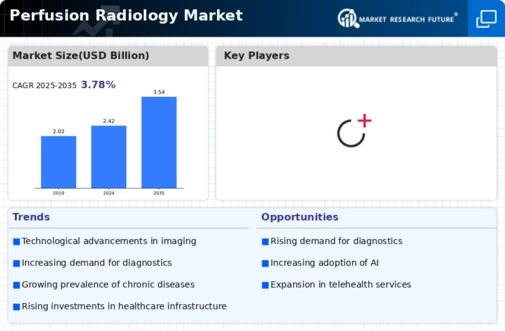
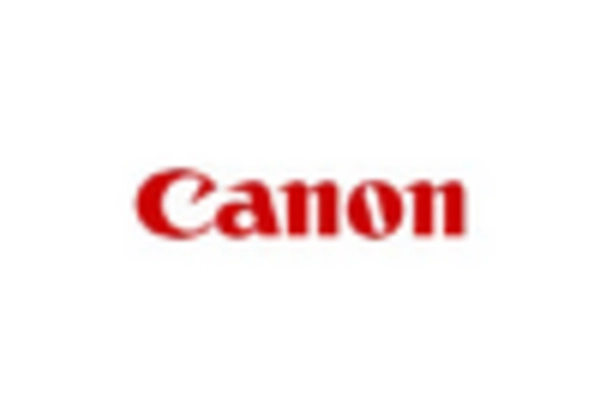
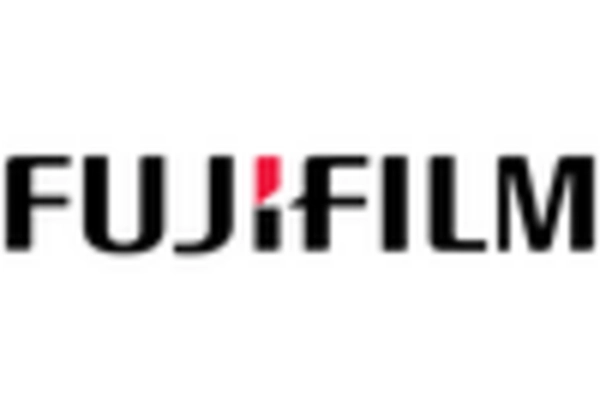

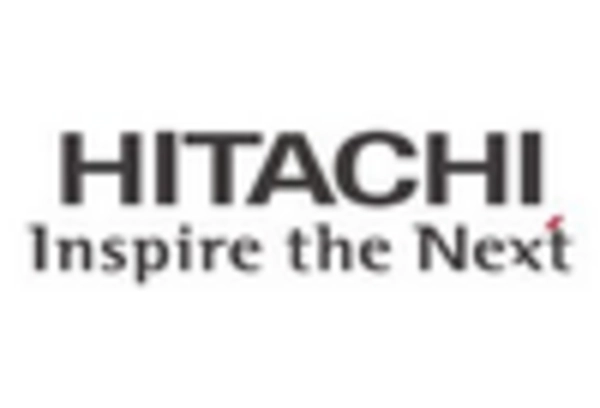
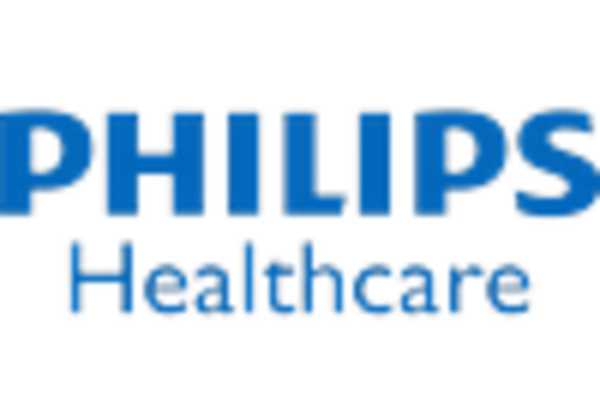


Leave a Comment